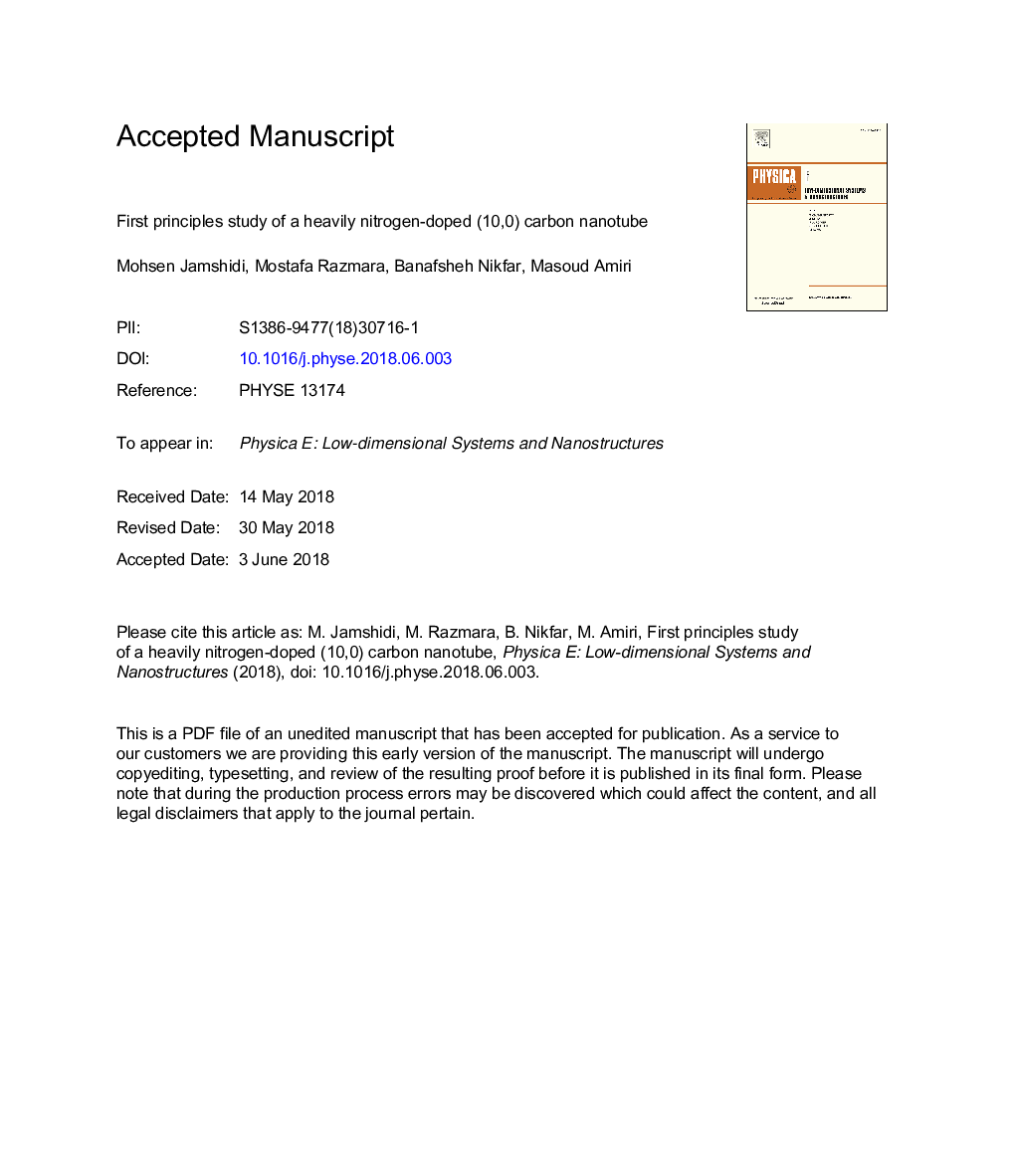| Article ID | Journal | Published Year | Pages | File Type |
|---|---|---|---|---|
| 7933111 | Physica E: Low-dimensional Systems and Nanostructures | 2018 | 23 Pages |
Abstract
Using Density functional theory, we studied the effects of adsorption and substitution of nitrogen atoms on structural and electronic properties of (10,0) carbon nanotubes (CNTs). Formation Energy (FE) considerations show that the substitution of nitrogen is more likely to occur than addition. Cohesive Energy (CE) considerations show that both nitrogen-doped CNTs can be achieved and the fabricated structures are all stable. When carbon atoms are substituted by nitrogen atoms, they behave as donors and when the nitrogen atoms are adsorbed on CNTs, they act as acceptors. Nitrogen contamination will turn the semiconducting (10,0) CNT into a metallic nanostructure, except for a special situation when the two nitrogen atoms are in chemically bonded to each other in which the resulting structure acts as a narrow gap semiconductor.
Related Topics
Physical Sciences and Engineering
Materials Science
Electronic, Optical and Magnetic Materials
Authors
Mohsen Jamshidi, Mostafa Razmara, Banafsheh Nikfar, Masoud Amiri,
